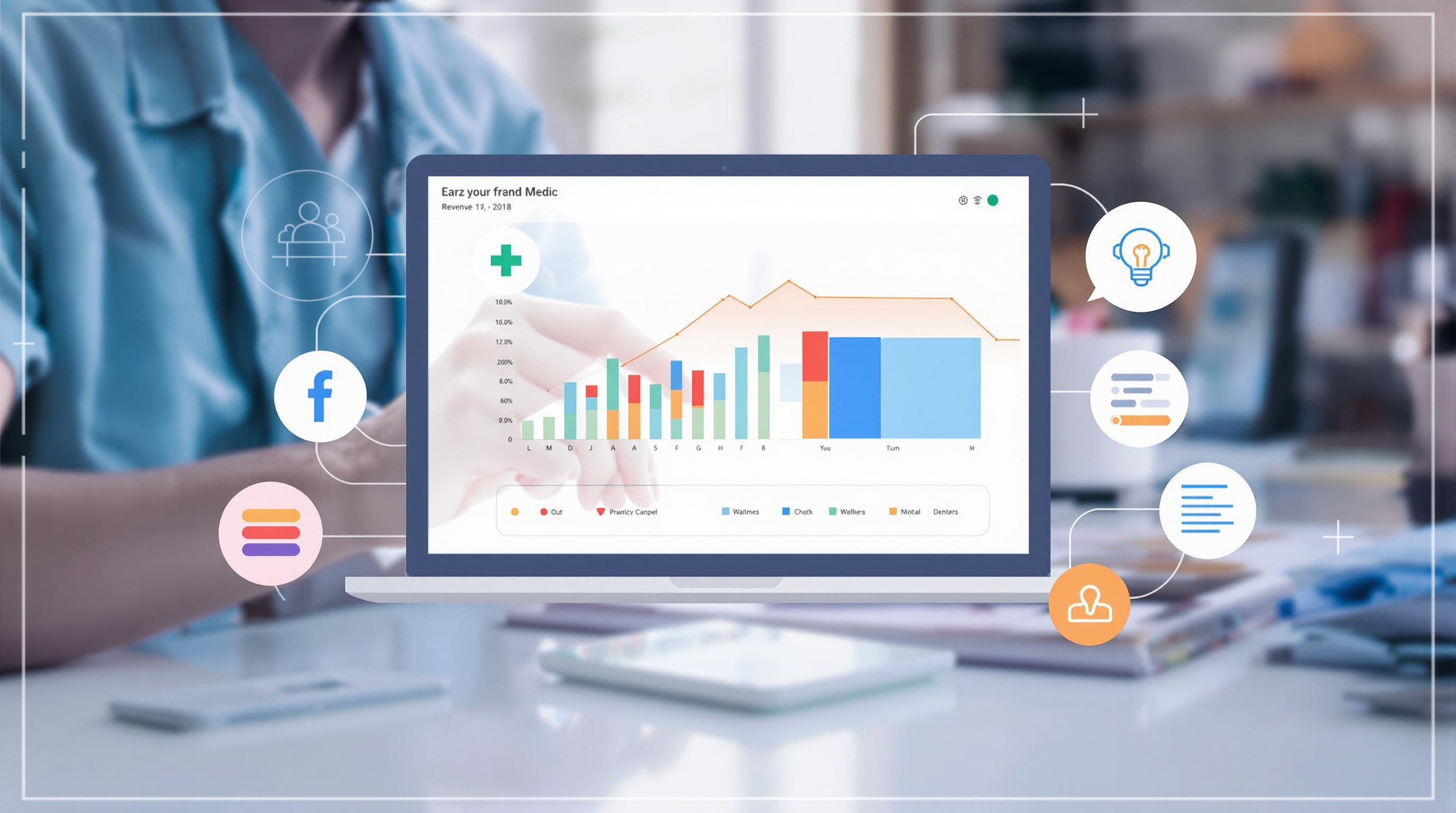Related Articles
- The Unexpected Impact of Environmental Factors on the Accuracy of Medication Dispensing Technologies
- Exploring the Influence of Mental Health Stigma on Accessibility and Affordability of Coverage in Modern Insurance Plans
- How Cloud Storage Quirks Are Quietly Complicating Patient Data Protection in Modern Healthcare Settings
- Top 6 Emerging Medical Billing Platforms Revolutionizing Practice Revenue Cycles Since 2019
- When Digital Distance Deepens Divide: Surprising Social Costs of Remote Health Services in Underserved Communities
- The Unexpected Role of EHR Usability in Physician Burnout and Strategies to Reclaim Workflow Balance
Top 6 Emerging Medical Billing Platforms Revolutionizing Practice Revenue Cycles Since 2019
Top 6 Emerging Medical Billing Platforms Revolutionizing Practice Revenue Cycles Since 2019
Since 2019, several groundbreaking medical billing platforms have transformed the efficiency and profitability of healthcare practices. This article dives deep into the top six innovators reshaping revenue cycles through automation, AI, and user-centric design.
The AI-Driven Revolution: Kareo’s Smart Billing Ecosystem
Let’s kick things off with Kareo, a platform that’s not just a billing system but an AI-powered revenue cycle game-changer. Since its significant upgrades post-2019, Kareo has leveraged machine learning to reduce claim denials by up to 30%, according to a 2022 internal report. Imagine a billing process that flags errors before they become costly bottlenecks—this is what Kareo delivers. For instance, a mid-sized dermatology practice in Chicago reported a 25% improvement in cash flow management after integrating Kareo’s smart alerts and real-time analytics.
Why Does Revenue Cycle Management Matter So Much?
If you think billing is a simple back-office chore, think again. Revenue cycle management (RCM) is the lifeline of any medical practice; without it, even the most skilled physicians can’t keep the lights on. The complexity of insurance claims, patient billing, and regulatory compliance demands a robust platform. Here's the kicker: practices using ineffective billing systems lose an average of 5-10% of their potential revenue annually (Healthcare Financial Management Association, 2021).
Cloud-Based Efficiency: Athenahealth’s Seamless Integration
One cannot discuss innovation without spotlighting Athenahealth. Their cloud-native platform ensures that every update and compliance change rolls out instantly, reducing operational headaches. A telling example is the Rush University Medical Center's adoption of Athenahealth in 2020; they reported a 15% decrease in billing errors within six months. By uniting clinical and financial data, Athenahealth helps bridge the gap that often leads to revenue leakage.
From the Trenches: A Story of a Small Practice’s Billing Renaissance
Meet Dr. Linda, a 52-year-old family physician in Austin, Texas, who was drowning in paperwork and denials. After switching to NextGen Healthcare’s billing platform in late 2019, she experienced a dramatic turnaround. “I reclaimed $20,000 in revenue within the first quarter,” she shared. How? NextGen’s dynamic coding assistance and automated follow-up workflows eliminated manual bottlenecks and improved claim approvals.
Humor Break: The Billing Blues
If medical billing were a sitcom, the recurring joke would be “Denial, denial, denial!” Imagine a never-ending loop where every claim gets bounced back because of tiny errors or missing info. Enter modern billing platforms, the unsung heroes replacing this farce with streamlined workflows. Trust me, asking your biller to watch every claim like a hawk is less fun than watching paint dry.
DrChrono: Streamlining Billing for the Mobile Generation
Designed with mobility in mind, DrChrono offers an app-centric approach that suits smaller practices and tech-savvy providers. Since their 2019 overhaul, DrChrono has emphasized ease of use alongside robust features like real-time eligibility checks and automated patient statements. A 2023 user survey noted a 40% reduction in billing cycle times among practices using DrChrono’s platform. This is especially vital for clinicians on the go, reducing the need to tether to office desks.
Persuasion Alert: Why Your Practice Needs an Upgrade Now
Old-school billing platforms might seem “good enough,” but clinging to outdated systems can silently bleed your practice dry. Emerging platforms aren’t just technological novelties; they are revenue-boosting engines. Practices incorporating these platforms report an average improvement of 20-35% in net collections within the first year (Medical Group Management Association, 2022). Can you really afford to wait?
Revenue Recognition Meets Automation: The NextGen Edge
NextGen Healthcare doesn’t just digitize billing; it revolutionizes revenue recognition by integrating patient data, payer requirements, and compliance into a unified workflow. For example, their advanced denial management features utilize automation to re-submit claims promptly, snatching back lost revenue that otherwise could vanish into the ether. Providers benefit from less manual labor and faster payments.
Case Study Spotlight: AdvancedMD’s Dynamic Revenue Solutions
AdvancedMD’s revenue cycle management suite has advanced substantially since 2019. By harnessing cloud computing and data analytics, AdvancedMD has enabled outpatient practices to reduce days in accounts receivable by 22% within a year of implementation. For instance, a cardiology group in Miami documented a 28% increase in clean claim rates after adopting AdvancedMD in 2021, emphasizing the platform’s impact on operational efficiency.
Conversational Dive: What Makes These Platforms Tick?
Okay, so we’ve named some heavy hitters—but what’s their secret sauce? It boils down to automation, real-time data insights, user-friendly interfaces, and adaptability to ever-changing healthcare regulations. Plus, they reduce the human error factor, which, let’s face it, has wrecked more billing cycles than we can count. It’s like having a smart assistant who never sleeps, who never calls in sick, and who doesn't demand a coffee break.
Statistical Snapshot: Market Growth Underpinning Innovation
The global medical billing software market size was valued at approximately $4.2 billion in 2019 and is expected to reach over $11 billion by 2027, with a CAGR of 13.2% (Grand View Research, 2023). This rapid growth reflects the healthcare industry's urgent demand for smarter billing solutions.
How Greenway Health is Changing The Game
Focused heavily on user experience and interoperability, Greenway Health has made huge strides since 2019. Their platform supports robust analytics and claims processing that helps increase collections efficiency. One standout feature is their integrated patient payment tools, helping practices collect co-pays and balances faster. A 2022 internal study revealed a 33% increase in on-time patient payments when practices used Greenway’s solutions.
Conclusion: Revolutionizing Medical Billing One Claim at a Time
In a world where medical billing complexity grows every day, these six platforms spearhead a vital transformation in healthcare revenue management. Embracing them can mean the difference between a thriving practice and a struggling one. The bottom line? To optimize revenue cycles and reduce administrative burdens, forward-thinking providers must leverage these emerging technologies now.
Article by Henry, age 43, a seasoned investigative reporter passionate about healthcare innovation, bringing you insights powered by data and real-world stories.




